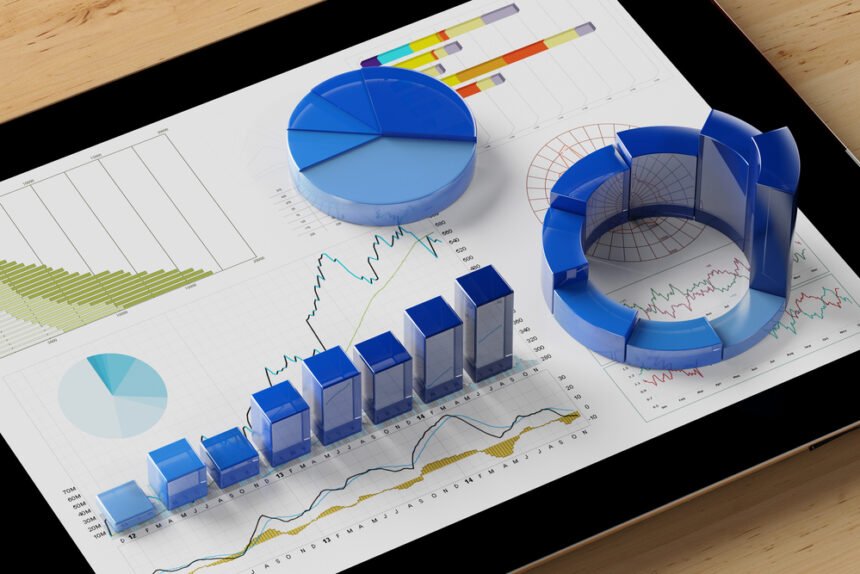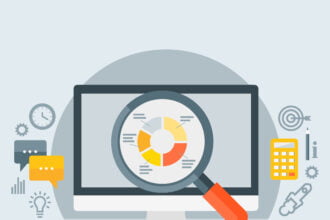Data analytics technology is helping businesses boost profitability in many ways. A few years ago, Walter Baker and his colleagues at McKinsey reported that one of the biggest advantages of big data in business is that it can help with pricing decisions.
“Without uncovering and acting on the opportunities big data presents, many companies are leaving millions of dollars of profit on the table. The secret to increasing profit margins is to harness big data to find the best price at the product—not category—level, rather than drown in the numbers flood,” they write.
In order to appreciate the benefits of using big data for optimizing prices, companies must recognize the merits of creating the right price point in the first place. Then they will find ways to track prices with analytics and adapt their pricing strategy accordingly.
Witness the true story of price points. See how their understanding can lead to massive business benefits. Profits, revenues, sales volumes, and customer loyalty. They all can be achieved through adequate and well-established price points.
The idea behind the pricing point is trivial and important – find the price that will help sell the particular number of units while gaining profits and keeping consumers satisfied with the price you have chosen. Price points help balance the price to keep the demand curve under control.
Here, you will witness some key aspects of price points and see the importance of coupling the phenomenon with advanced techniques involving software and automated input.
What is this beast?
As it was mentioned above, price points are fairly simple to understand. However, its simplicity should not deceive you. As determinants of the pricing strategy, price points show their pros & cons and are often hard to properly assess. Why? Because establishing good price points depends on one’s ability to collect and process massive amounts of data. Even though instruments like price management software are available, you still need to know what type of data to analyze and how to do it.
How Can Data Analytics Help with Creating a Pricing Strategy?
This illustrates the importance of using data analytics to create a successful pricing strategy. Prior to the proliferation of big data, companies had to blindly make intuitive decisions about their pricing strategies. This was a hit or miss practice, because countless factors influence pricing models. Even when companies were able to successfully select profitable price points, they struggle to be responsive too changes in the market that shifted them.
Data analytics technology helps companies establish better price points. Here are some benefits of using big data to address pricing challenges:
- You can use predictive analytics technology to anticipate upcoming events that will influence the market and force you to change your pricing model.
- You can use machine learning to automate certain price changes.
- You can use data analytics to identify purchasing behavior across different demographic groups. This helps you create more nuanced pricing models that may vary across different regions.
- You can look at historic sales data and use analytics tools to identify various environmental factors that changed sales volume. This helps you adjust your prices for seasonal trends, upcoming events or other extraneous factors that you have to take into consideration.
More companies are using data analytics to optimize their pricing models. The benefits listed above are the basis for their decisions to do so.
Balancing with price points
In the science of price points, it is crucial to avoid extremes. It can be achieved through the notion of price thresholds. What do they mean? Price thresholds illustrate the connection between the price of a product and the customer’s willingness to pay for the product. Set the price too low, and the clients will think that the product is of a low value. Set the price too high, and consumers will assume that the product does not worth it. Price thresholds help you balance highs and lows, thus keeping price points in perfect equilibrium.
This is where big data becomes so important in pricing. You can look at historical sales data to identify the price points that led to the best equilibrium points to maximize sales.
How can your company use data analytics to unleash the potential of price points?
Price points are not static. It means that they need to be adjusted to the ever-changing market realities. Besides, consumer preferences might shift, thus driving price points in a different direction. However, even in the most dynamic price points, there are some constants – business objectives, competitors’ strategies, availability of supply, demand curve, and customer loyalty.
Data analytics helps your company distinguish the variables that are static from those that are dynamic. The data can be incorporated into predictive analytics models to best forecast the right price points in the future.
For example, companies like Uber have historic data on the sales volume during major holidays like New Years and dangerous weather events. They can use this data to adjust prices as these events transpire. They can also monitor data in real-time to change prices and even automate their pricing strategy to reflect instantaneous event changes.
It can be challenging to keep tabs on all the factors mentioned above. However, it is paramount to do so. Following are several options for ensuring the price points work to your benefit and with the least resistance.
Option 1: Testing
Data analytics is helpful, but it doesn’t spare you from having to all of the grunt work. You cannot avoid getting your hands dirty to know your best price points. The best price points emerge from mistakes and learned insights, as with any action. Test different price points and look at the results in such a case. It can be customers’ reactions or profit margins. Determine what indicators to use to understand whether a particular price point passed the test.
There are different tests available. If you look for a more organized testing approach, consider using A/B testing. It is a simple solution that does not require too much knowledge or time to handle. Essentially, the method compares several price point strategies to present the one most applicable to your scenario.
Option 2: Advanced software
If testing is not your style, you can always use technological means. New pricing software uses sophisticated data analytics tools to help companies find the best price points.
There are various advanced data analytics solutions available on the market. Price management software is one of them. Such a tool can help you rip the benefits of automated pricing. How does it work? You give the machine different variables, playing out various pricing scenarios. As an outcome, you pick the one recommended. Often, the result translates into pricing that brings revenues and profits.
Advanced solutions are extremely viable for companies with broad portfolios. However, they are also beneficial for businesses relying only on one or few products. Price management software often includes a library of different scenarios generated in the context of various market environments. There is a massive chance that one of them will fit your given case.
Option 3: Skimming
The skimming model dictates that prices should be established to create the most favorable conditions for a company to enter a new market. How is it done? First and foremost, the company sets a particular objective. For instance, a business looks for an optimal price in a highly competitive environment. Second, the company needs to understand its end-game. For illustration, it can be achieving maximum profits in the shortest period possible. Third, it is crucial to understand the psychology behind entering a new market with a new product.
Following all three steps presented above, you should be able to complete the following strategy. You can set a higher price point when the new product is introduced. It will create the impression that customers can buy something unique and valuable. Besides, you can always add a feeling of urgency to the mixture. Later, when the new product reaches maturity, it is time to lower the price point. It is necessary to keep consumers interested, namely because, with time, the demand for the product naturally declines. Lower prices mean customers can get a good deal, which everyone likes.
Option 4: Assessment
Price points bring the most benefit when constantly updated and monitored. It is crucial to perceive them as living organisms that adapt to the changing environment. This approach helps you be one step ahead of competitors and make sure your customers are comfortable paying the price you set on a product. Always make sure your price points correlate to your key business objectives. Besides, constantly monitor price points using various KPIs, which you’ve chosen as pivotal.
In addition, don’t shun looking at your rivals. See how they are doing with their price points. Are there any mistakes they make? Are consumers like their prices versus their products? These are the questions to ask. They help monitor your price points and ensure you’re the one learning from the mistakes of others and not vice versa.
Big Data Helps Companies Establish the Most Profitable Price Points
As you can see, price points are both simple to understand and hard to implement. Nevertheless, you can easily establish price points equipped with the knowledge above if you understand the benefits of pricing analytics. Just make the most of price management software with sophisticated data analytics features and keep price points constantly monitored, assessed, and updated.









